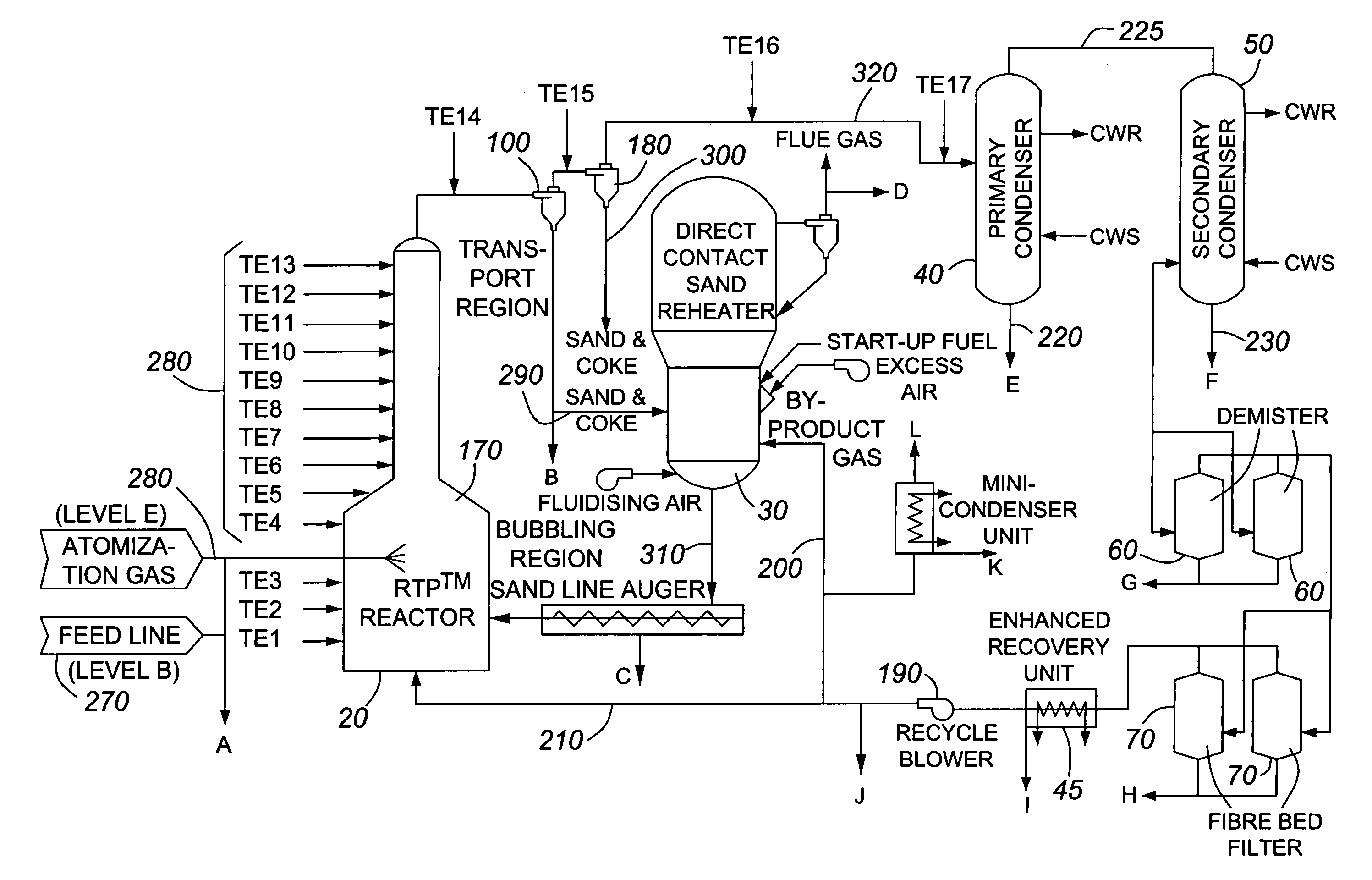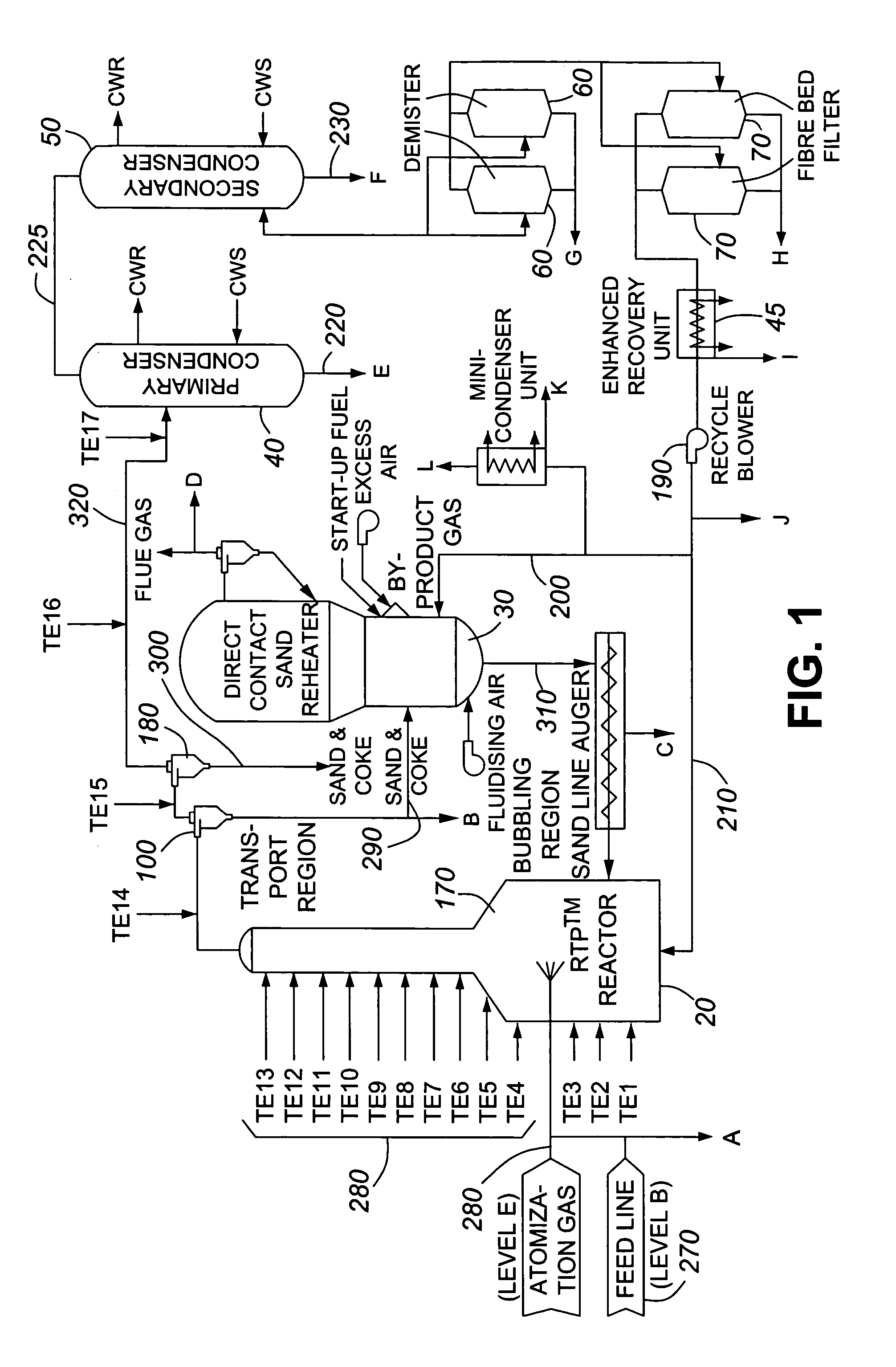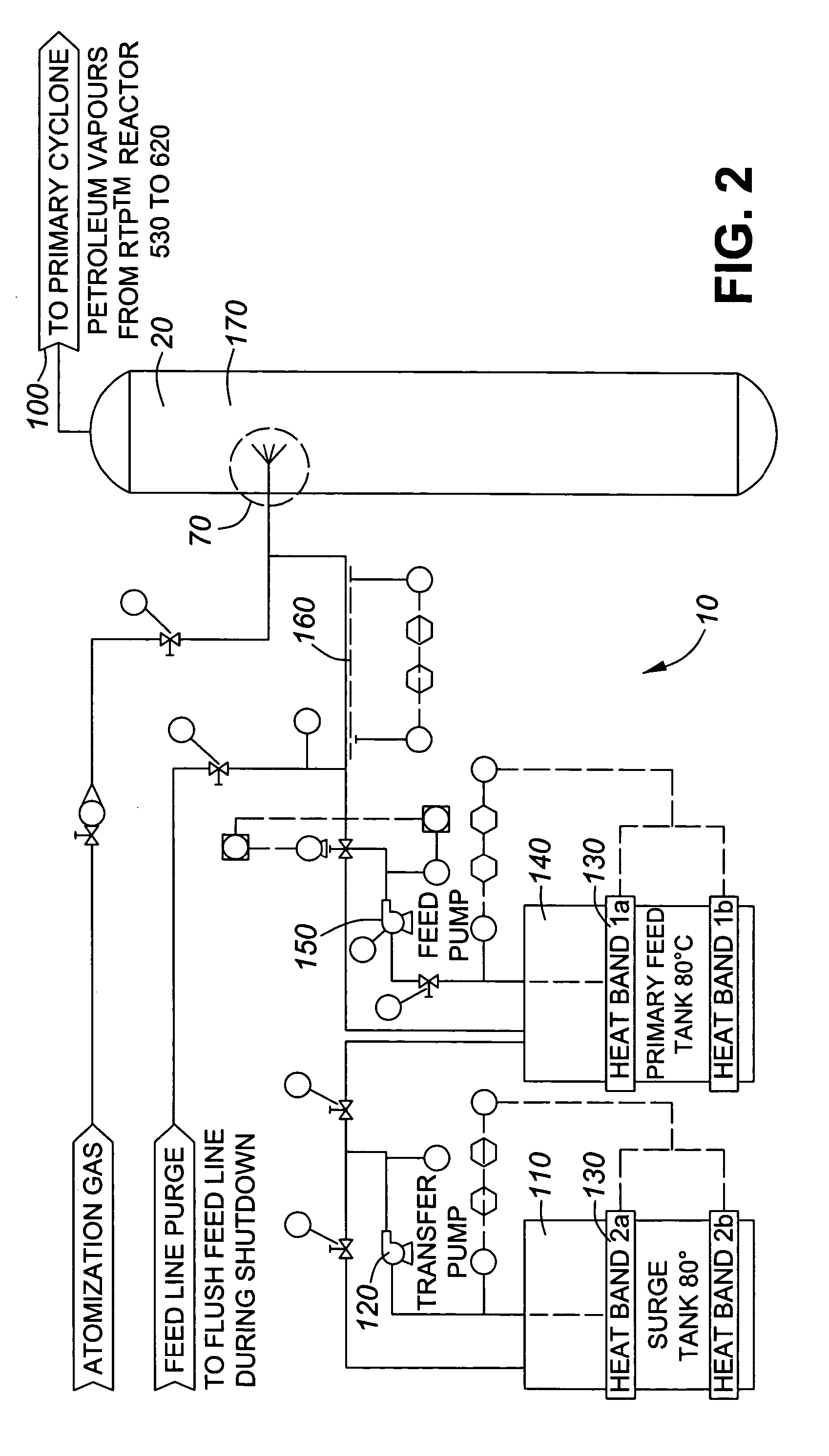Modified thermal processing of heavy hydrocarbon feedstocks
a technology of hydrocarbon feedstocks and thermal processing, which is applied in the direction of thermal non-catalytic cracking, gaseous mixture working up, fuels, etc., can solve the problems of not being able to easily process bitumen blends or synthetic crudes in conventional fluid catalytic cracking refineries, pipelines cannot handle these crude oils, and diluted crudes or upgraded synthetic crudes are significantly different from conventional crude oils. , to achieve the effect of reducing the h2
- Summary
- Abstract
- Description
- Claims
- Application Information
AI Technical Summary
Benefits of technology
Problems solved by technology
Method used
Image
Examples
example 1
Heavy Oil (Single Stage)
[0186]Pyrolytic processing of Saskatchewan Heavy Oil and Athabasca Bitumen (see Table 1) were carried out over a range of temperatures using a pyrolysis reactor as described in U.S. Pat. No. 5,792,340.
[0187]
TABLE 1Characteristics of heavy oil and bitumen feedstocksCompoundHeavy Oil1)Bitumen2)Carbon (wt %)84.2783.31Hydrogen (wt %)10.5110.31Nitrogen (wt %)Sulphur (st %)3.64.8Ash (wt %)0.020.02Vanadium (ppm)127204Nickel (ppm)4382Water content (wt %)0.80.19Gravity API°11.08.6Viscosity @ 40° C. (cSt)650040000Viscosity @ 60° C. (cSt)9005200Viscosity @ 80° C. (cSt)240900Aromaticity (C13 NMR)0.310.351)Saskatchewan Heavy Oil2)Athabasca Bitumen (neat)
[0188]Briefly the conditions of processing include a reactor temperature from about 500° to about 620° C. Loading ratios for particulate heat carrier (silica sand) to feedstock of from about 20:1 to about 30:1 and residence times from about 0.35 to about 0.7 sec. These conditions are outlined in more detail below (Table 2)...
example 2
Bitumen (Single Stage)
[0200]Several runs using Athabasca Bitumen were conducted using the pyrolysis reactor described in U.S. Pat. No. 5,792,340. The conditions of processing included a reactor temperature from 520° to about 590° C. Loading ratios for particulate heat carrier to feedstock of from about 20:1 to about 30:1, and residence times from about 0.35 to about 1.2 sec. These conditions, and the resulting liquid products are outlined in more detail below (Table 7).
[0201]
TABLE 7Single Stage Processing with Undiluted Athabasca BitumenMetalsCrackViscosity @YieldDensity @Metals VNiTemp40° C. (cSt)wt %15° C.(ppm)*(ppm)**API519° C.20581.0ndndnd13.0525° C.20174.40.979882412.9528° C.27882.7ndndnd12.6545° C.15177.40.987742711.8590° C.25.674.60.983ndnd12.4*feedstock V 209 ppm**feedstock Ni 86 ppm
[0202]These results indicates that undiluted bitumen may be processed according to the method of this invention to produce a liquid product with reduced viscosity from greater than 40000 cSt (@40...
example 3
Composite / Recycle of Feedstock
[0207]The pyrolysis reactor as described in U.S. Pat. No. 5,792,340 may be configured so that the recovery condensers direct the liquid products into the feed line to the reactor (see FIGS. 3 and 4).
[0208]The conditions of processing included a reactor temperature ranging from about 530° to about 590° C. Loading ratios for particulate heat carrier to feedstock for the initial and recycle run of about 30:1, and residence times from about 0.35 to about 0.7 sec were used. These conditions are outlined in more detail below (Table 10). Following pyrolysis of the feedstock, the lighter fraction was removed and collected using a hot condenser placed before the primary condenser (see FIG. 4), while the heavier fraction of the liquid product was recycled back to the reactor for further processing (also see FIG. 3). In this arrangement, the recycle stream (260) comprising heavy fractions was mixed with new feedstock (270) resulting in a composite feedstock (240) ...
PUM
| Property | Measurement | Unit |
|---|---|---|
| Temperature | aaaaa | aaaaa |
| Temperature | aaaaa | aaaaa |
| Temperature | aaaaa | aaaaa |
Abstract
Description
Claims
Application Information
 Login to View More
Login to View More - R&D
- Intellectual Property
- Life Sciences
- Materials
- Tech Scout
- Unparalleled Data Quality
- Higher Quality Content
- 60% Fewer Hallucinations
Browse by: Latest US Patents, China's latest patents, Technical Efficacy Thesaurus, Application Domain, Technology Topic, Popular Technical Reports.
© 2025 PatSnap. All rights reserved.Legal|Privacy policy|Modern Slavery Act Transparency Statement|Sitemap|About US| Contact US: help@patsnap.com



